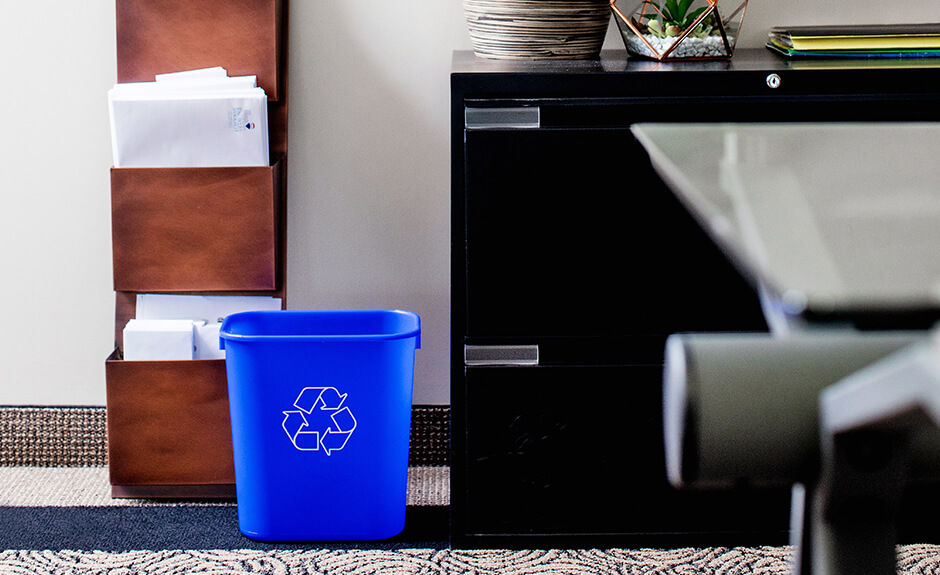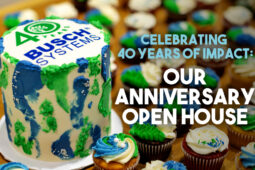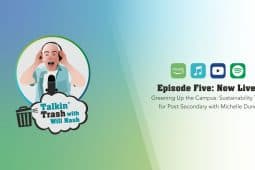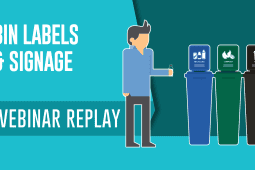There’s a common phrase shared between campus recycling and waste managers: it’s easier to ask for forgiveness than it is to ask for permission. You may need to temporarily place a roll-off dumpster outside a professor’s office window, or change collection schedules to a different day of the week. Never mind any political biases a college culture may have, they are fundamentally conservative places when it comes to institutional change. Operational changes inevitably impact one campus stakeholder or another, and their perceptions of the inconvenience about to be inflicted on them often fails to match the reality. Regardless of the official protocol, you develop a sense for the types of actions you can get away with simply doing on your own. Reorganizing deskside collection service is not one of them.
This blog series has explored the growing trend to reconfigure bin and service arrangements for office deskside collections, with an emphasis on moving to a small trash bin /self-service model. Part 1 and Part 2 installments focused on the types of changes one could make, the arguments for doing so, and steps to lay the groundwork for implementing them. With this final blog, we dive into the strategy of how to roll out a new system that people will actually adopt.
One note up front: the steps I’m describing below assume a slower, phased-in approach that potentially requires a significant amount of staff time. Some schools will go as far as dedicating a coordinator position for the six months or longer it takes to convert a large campus. I believe investing in a new collection system with the potential for significant long-term benefits justifies a high level of effort to ensure a smooth implementation… if you have the resources. Of course, many recycling/sustainability programs don’t have the budget or bandwidth for a “Cadillac” rollout. Some schools do just fine with a “Chevy” version that cuts out certain steps. Each coordinator knows their campus culture. Whatever shape it takes, just be mindful that a deliberative implementation strategy can mean the difference between broad acceptance and a chaotic process that fails to take hold.
Develop a Communication Plan
A professor may complain about a roll-off placed outside their window, but there are several tons worth of “facts on the ground” that make it likely to stay put in the near term. Convincing the same professor to walk their trash to a bin in the hallway on an ongoing basis is a different matter. That requires active buy-in, which in turn requires a communication plan that:
- Prepares people and works to avoid surprises. Explain exactly what the change is, and how and when it will be implemented.
- Outlines compelling reasons for the change. They don’t have to find those reasons compelling, but you don’t want them to feel it is arbitrary.
- Shows you’ve done your homework. This is one reason you run a pilot.
- Presents evidence the new system can accomplish its goals. Having preliminary results is the other reason you run a pilot. Point to success stories from other institutions. Again, people don’t have to value the outcome, but they do have to believe their effort serves some purpose.
- Normalizes the change. Peer pressure isn’t just for teenagers! Reinforcing the perception others are ok with the new system is probably the single strongest factor in getting someone to accept it themselves.
There are a number of elements to an effective communication plan. A good first step is to give the initiative an identity by branding it. The University of Washington and a number of other schools in the Pacific Northwest have named their deskside systems “Mini-Max”. Georgia Tech calls theirs’ AWARE (Actively Working to Achieve Resource Efficiency). Several northeast schools including Boston University and Brown University have the “Trash Buddy” arrangement. I personally like the University of Tennessee’s “My Tiny Trash”. It reminds me of the old TV series, My Favorite Martian, but more importantly, it reinforces the idea of minimizing the quantity of trash.
Announce the new system with a focused media strategy. Even if the new system will roll out in phases over time, put it on everyone’s radar upfront. Beyond creating awareness of the coming change, a key goal is to define the initiative in positive terms that the campus should want to embrace. Issue a press release, solicit stories from the campus newspaper, write a blog, produce a short video, stage a splashy event on the quad. Cover the basics – the who, what, how, why & when of the change. Have testimonials to go with this, such as a quote and photo of a smiling participant from the pilot, proudly holding their new bin. Ask campus influencers to make public endorsements. IUPUI’s Chancellor Paydar gave a shout out for the school’s new office collection system during a convocation speech. When Glendale Community College expanded their office Zero Waste Program campus-wide in 2014, the announcement was made by President Kovala.
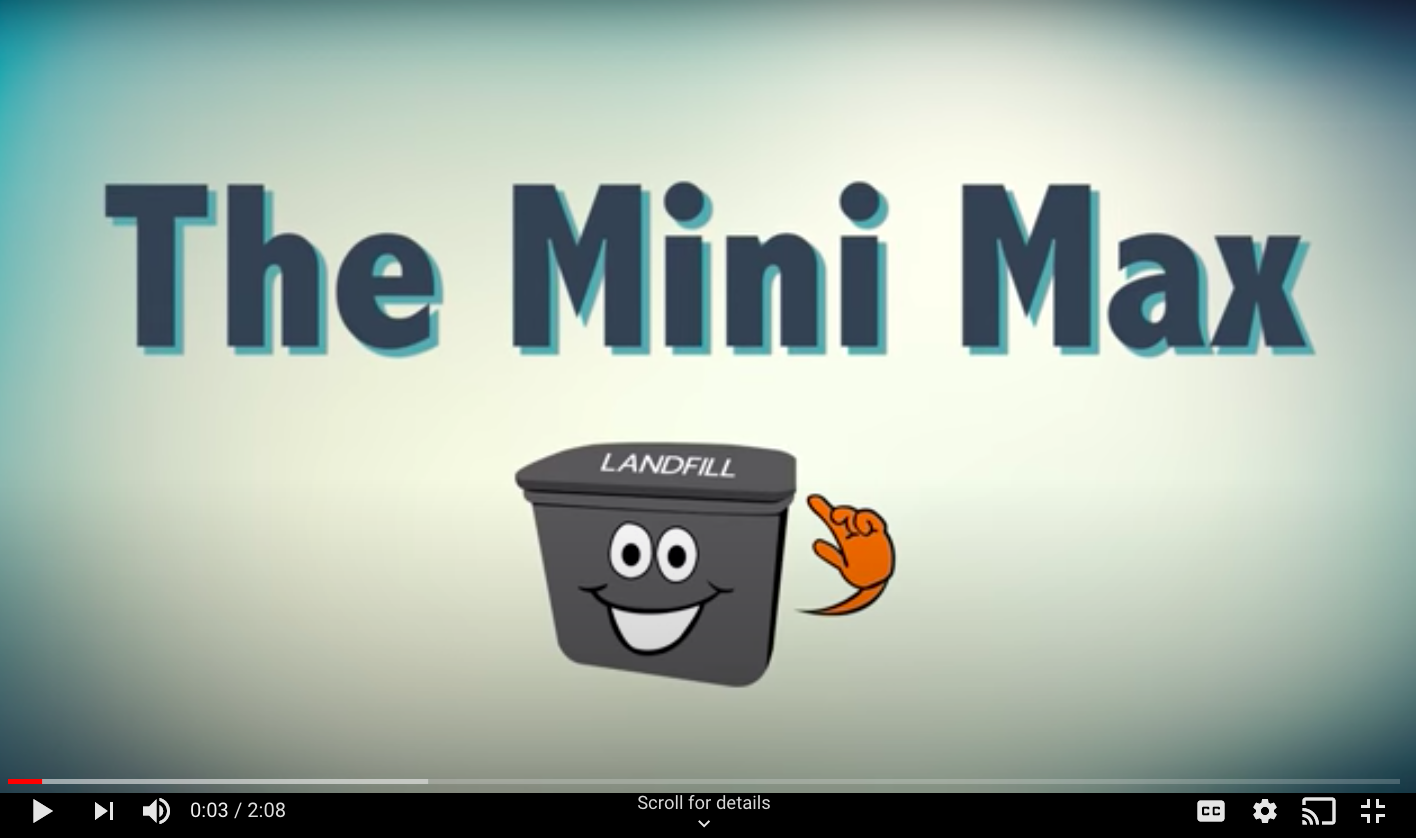
Click to watch a Portland Community College video to promote
their Mini-Max program.
Create a dedicated page on the recycling or facilities department website with key information about the program. Tuft University has a good page with a detailed FAQ’s to answer questions. To keep people in the loop, UC Berkeley and University of Tennessee U posted timelines to their websites showing when specific campus buildings were scheduled to switch over to the new system.
Introduce the New System in Person
In the previous blog, I discussed the importance of winning over upper administrators and other campus-wide stakeholders to build momentum for a new deskside system. As you get ready to actually roll out the program, it is equally important to involve local stakeholders on the building and department level. Start with reviewing operating procedures with the custodians and their managers for each area about to be converted. Portland Community College’s sustainability director, Elaine Cole made a point of attending custodial staff meetings. Beyond explaining their role with the new collection system, she found the meetings valuable to build ground-level support and learn about localized complexities or considerations.
Kent State University followed a smart strategy, setting up advance meetings that also included building managers, department heads, and importantly, people within those buildings known to have strong opinions (…we’ll call them “thought leaders”). The meetings were a chance to explain the new system in detail, address questions, and give people a chance to voice concerns. While these types of advance meetings may not eliminate opposition, they can help find a middle ground that softens it.
To the extent possible, it should be a priority to introduce the new system to individual staff and faculty in person. Coordinate with department heads or deans to send out an announcement about the impending change, and either plan an all-staff meeting or request time on standing department meeting agendas. Portland Community College put a twist on the concept by staging a “Trash Can Turn In” event when they converted the facilities department offices. Staff were invited to stop by for food and beverages, listen to a quick primer about the new program, and then receive their new side-saddle trash basket. The alternative or complement to scheduled meetings is to have trained staff walk through buildings, hand-delivering the new bins with an explanatory flier to each office worker. This takes a lot of time, but the opportunity to directly explain the system and respond to questions or concerns can have a measurable impact on participation rates over the long term.
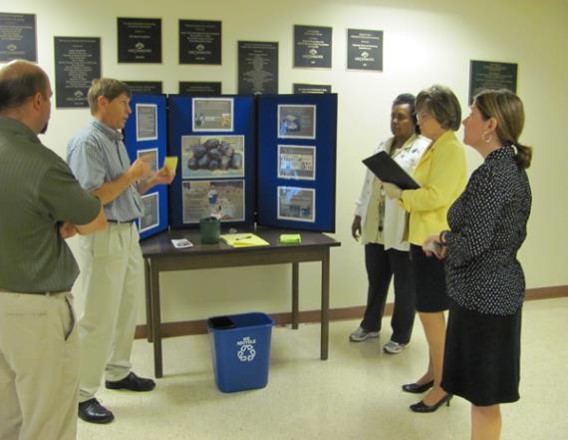
Introducing the new system to department staff
“Photo provided by UNC Charlotte”
…And Yes, Have a Political Strategy
Complaints will come. The question is whether they gain enough traction to roll back the program or gradually fade as people come to accept the new system. All the planning steps I’ve described in this blog series are intended to provide a measure of political inoculation. Nonetheless, one should be prepared to respond directly to protests as they come up. Have your talking points ready and be prepared to meet the challenges head-on. Don’t assume objections will be addressed to you directly. Recruit friendly staff or custodians to be your eyes and ears on the ground so that the first you hear of complaints isn’t coming from a dean or vice president.
Be prepared to acknowledge legitimate issues and where possible, take visible steps to address them. Some workstations may have an unreasonably long walk to reach centralized bins. Offer to set up new stations in more convenient locations. People object that bagless bins will be smelly? Offer an option to have them cleaned periodically or a way to get liners on request. A handicapped professor has mobility challenges or there’s no one person to take responsibility for baskets in shared workspaces? Make an exception for custodians to keep servicing these locations. Kent State’s sustainability manager, Melanie Knowles said a helpful response to people who said no was to negotiate a trial period. In most cases, the sky did not fall and people eventually adapted to the system.
Whether legitimate or not, the objective is to prevent complaints from building into a counter-narrative that spawns a popular revolt. One sustainability manager I spoke to likened this back and forth to hostage negotiation. Like any negotiation, the key is to understand the cards you’re holding. Be willing to make strategic concessions where necessary, but defend against the pressure that can lead to a patch quilt of arrangements that undermine the program’s uniformity.
BTW, I have a pro-tip if you find yourself having to justify the self-service arrangement. Labor savings is a strong reason to adopt a self-service model, but avoid framing it in these terms. As Melanie pointed out when we spoke, staff and faculty are likely to react negatively if they think the new system will result in custodians losing their jobs. And of course, in most situations, they don’t. Instead, reinforce the truth that the change simply frees their time to focus more on cleaning and other tasks that will benefit them.
Lock in Success
Two important but underappreciated steps remain once the new system is in place. As we’ve discussed, the small trash / self-service system is designed, in part, to passively encourage recycling behavior. Another recognized behavior change technique is to follow up letting people know the impact their efforts have. There is hard science showing people don’t need to be invested in the results to participate. But everyone wants to feel that if they’re going to make an effort that it somehow serves a purpose. To the extent you have the resources to measure and publicize the impact of the new system. Even if you don’t have an ongoing system to track waste and recycling generation by building, consider making a special effort to do this during the month before and after they’re converted. Track the dollars saved by eliminating bag liners. Do some back of the napkin estimates of the time saved by custodians and the corresponding percentage increase in the time they dedicate to cleaning offices. Put this information into a “congratulations” memo sent to building occupants or onto posters placed on bulletin boards. Even better, do another walkthrough visiting people at their workstations to share the news and ask how the system is going from their perspective.
Finally, have a plan to monitor and adjust the system over time. Bins will go missing. New staff comes in not knowing what to do. Resistance can go underground, with people either bringing in their own larger trash bin or persuading their custodian to continue servicing them. It’s entirely possible for a collection program to take off… and then crash and burn. Or more likely, atrophy over time. If allowed to, the impact of the new system will dwindle and eventually risk reverting to the previous arrangement. Plan to do periodic walkthroughs of buildings in the months following their conversion to gauge how well the system is taking root. And going forward, look for ways to integrate program details into green office certification or other staff education efforts.
Don’t be Intimidated
This blog series has necessarily focused on the challenges of implementing a small-trash / self-service deskside arrangement. None of this should dissuade recycling or sustainability managers from pursuing it. This is one of the more impactful steps a college or university can take to improve recycling rates. I’ll argue it’s an essential component of a serious plan to reach a zero-waste or high diversion goal. As any school that has hit a plateau with its recycling rates can tell you (and let’s be honest, all schools eventually do), simply putting out recycling bins does not stop a significant percentage of recyclables from ending up in the trash. Neither does painting a yellow line down a road prevent millions of car accidents each year. In the same way that modern traffic engineering uses concrete dividers or traffic calming features to influence safer driving behavior, designing smarter waste collection infrastructure and service arrangements are integral steps to guiding improved recycling behavior.

Happy customers with their new waste basket
Photo provided by Portland Community College
One last point and then I’ll get off my soapbox. Don’t let the prospect of staff complaints intimidate the decision process. I’ve spoken to schools whose efforts were blocked, but a strong majority that start down this road are successful in the end. As Patrick Cigana of Polytechnique Montréal told me, “We tend to be too timid when implementing change; we exaggerate the anticipated backlash, at least in a university context, where one should expect people to understand and accept change more easily when it’s justified.”
This change is justified.
————————–
On a closing note, I’m listing a number of resources below that may be helpful to schools considering a small trash/self-service deskside system. Please reach out to me if your school is seriously looking at this system. Busch Systems provides consulting services to help with this type of project planning, but I’m also happy to share quick feedback to questions or considerations that may come up. I also love to hear about success stories if you have one to share. Email me at alecc@buschsystems.com.
Resources
- Google sheet of schools known to have some version of the small-trash / self-service deskside arrangement. Email alecc@buschsystems.com with details for schools not listed or to share updates for those that are.
- The University of Southern Maine produced a helpful planning guide for setting up their version of this model.
- Keep America Beautiful did a study in 2014 documenting the impact of the small trash clipped to a regular recycling deskside arrangement. Here’s a brief fact sheet, or dive into the full 126-page report.
